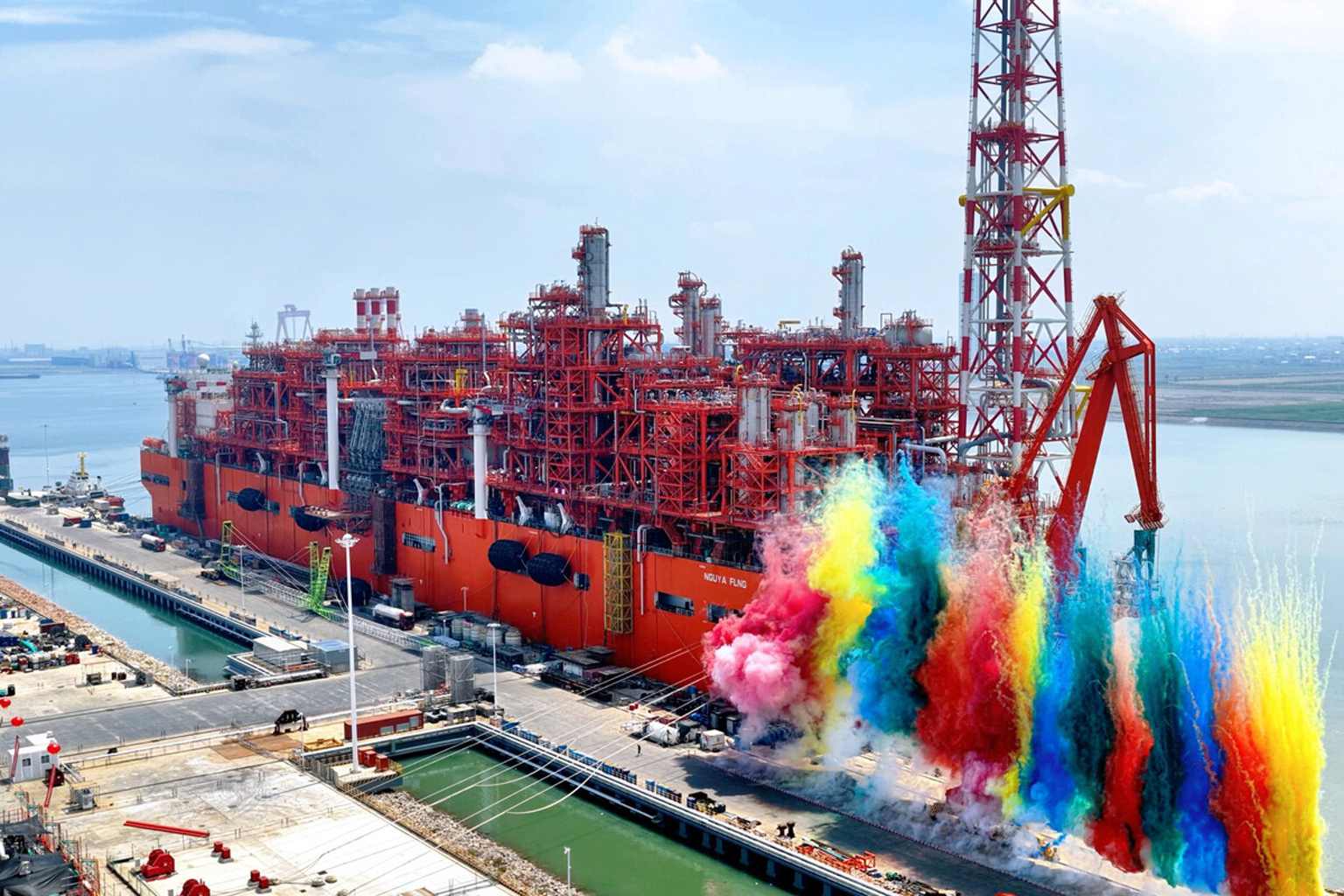China has just unveiled a breathtaking new giant on the seas—a massive floating gas plant stretching over 1,230 feet long and headed straight for Africa. This floating marvel, named NGUYA FLNG, promises to revolutionize how natural gas is processed at sea without ever touching land.
Measuring an incredible 376 meters (around 1,234 feet) in length, this is the largest floating liquefied natural gas (FLNG) facility ever built in China. Located at a bustling shipyard in Nantong, one of China’s key maritime hubs, the NGUYA FLNG is designed to transform natural gas into liquefied natural gas (LNG) directly offshore. Its destination? The waters off the Republic of Congo, where it will kickstart a new chapter in Africa’s energy story.
How China’s floating gas plant sets a new record
The NGUYA FLNG doesn’t just break records in size—it also packs an impressive industrial punch. Boasting a width of 197 feet and a height of 115 feet, this floating plant houses cryogenic tanks capable of holding 6.4 million cubic feet of liquefied natural gas and 1.6 million cubic feet of liquefied petroleum gas. Its production capacity is estimated at 2.4 million tons of LNG annually, fueling hopes for a smoother global transition toward natural gas energy.
Unlike traditional onshore terminals that require extensive infrastructure, floating plants offer a nimble solution by processing gas right where it’s harvested deep at sea. This innovation accelerates export capabilities and opens doors to resources that would otherwise be difficult and costly to develop.
Industry experts predict the global FLNG capacity will soar, tripling by 2030 as more companies embrace offshore solutions. In this league, NGUYA FLNG positions China alongside international players like Shell’s Prelude FLNG or Petronas’ floating plants.
The massive logistical challenge of moving the plant
Getting this floating giant from its birthplace in Nantong to the Republic of Congo is not your everyday journey. It took 14 tugboats and patrol vessels working in perfect coordination, assisted by drones monitoring every detail, to tow the plant safely. The convoy stretched over 2,400 feet long at times—a new regional record for coastal towing.
The NGUYA FLNG’s route covers thousands of miles across oceans, eventually anchoring about 31 miles offshore Pointe-Noire in deep waters ranging from 108 to 115 feet. Singapore-based PACC Offshore Services Holdings (POSH) masterminded the operation, navigating tides, weather, and maritime traffic to ensure this behemoth arrives intact and on schedule.
Once in position, the plant will link up through subsea pipelines to the Marine XII block, tapping rich offshore reservoirs and sending processed LNG onward to global markets.
Why Africa and Europe stand to benefit
This floating LNG plant is a cornerstone of the Congo LNG project, spearheaded by Italian energy giant Eni. Together with the operational Tango FLNG, NGUYA FLNG will uplift Africa’s gas-processing capabilities to nearly 3 million tons per year.
For the Republic of Congo, this means leveraging substantial offshore gas reserves without building costly onshore terminals, accelerating their entry into global energy markets. For Europe, particularly amidst energy uncertainties due to reliance on Russian gas, Congo LNG offers a strategic new supplier. It aligns with efforts to diversify energy sources with more stable and cleaner alternatives.
The fast deployment of floating plants like NGUYA allows countries to ramp up production swiftly. Yet, these advances come with challenges: hefty financial investments, intricate logistics, and the care needed to protect marine environments and coastal communities.
What we can learn from this giant project
Witnessing NGUYA FLNG’s journey brings home just how far engineering and ambition can push boundaries. I remember visiting an offshore platform years ago and feeling overwhelmed by the scale and complexity involved. This floating plant magnifies those feelings—it’s a marvel of modern industrial might and coordination.
Such projects don’t just produce energy—they symbolize a shift in how the world approaches resource extraction and energy security. Floating LNG plants hold the promise of cleaner fuel access while minimizing the ecological footprint on land.
But they also ask us to consider the delicate balance between innovation, environmental protection, and social responsibility. Will these floating giants shape a sustainable energy future, or will new challenges arise?
What do you think about this game-changing floating gas plant? Is it a beacon of hope for global energy security or a complex venture with hidden risks? Share your thoughts and help spread the word by sharing this story.
